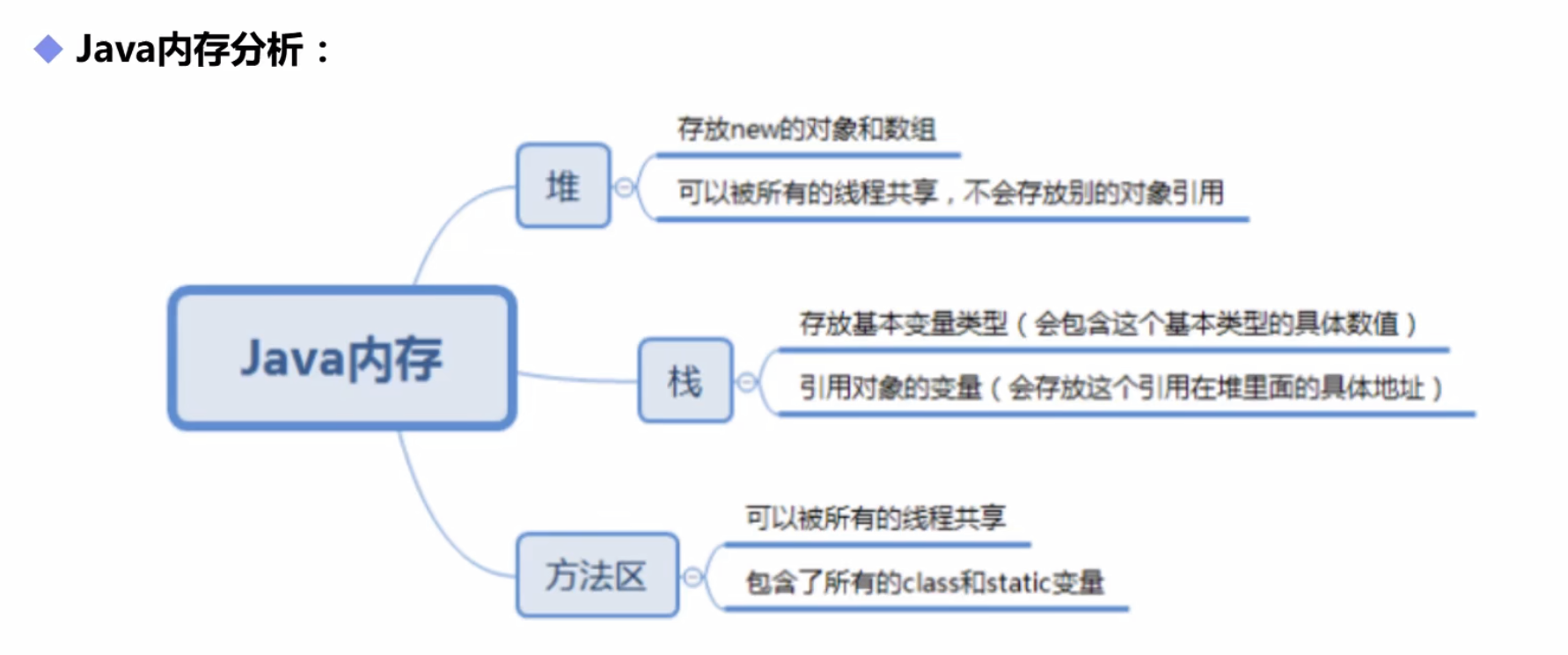摘要:
###以类的方式组织代码,以对象的方式组织(封装)数据 ####组织代码(类) public class Demo04 { String name;//默认值null int age;//默认值0 public void study() { System.out.println(this.name+ 阅读全文
摘要:
###传递对象 public class Demo03 { //引用传递:(实际上还是值传递)对于引用数据类型来说,传递的则是地址的副本(对象的地址)。但由于地址副本和原来的类似,因此传递过去后形参也只想同一个内存空间 public static void main(String[] args) { 阅读全文
摘要:
###对比 public static void a(){ b(); }; public void b(){ a(); }; ####此时a方法里面调用b方法会报错,而b方法中调a不会报错是因为,a方法本身是static方法它和类一起加载时间片较早,而b是类实例化后才会存在,因此会报错 阅读全文
摘要:
###稀疏数组的含义 ###Java实现代码 public static void main(String[] args) { int[][] arrays1=new int[11][11]; arrays1[1][2]=1; arrays1[2][3]=2; System.out.println( 阅读全文
摘要:
###数组工具类java.util.Arrays ###Arrays类中的方法都是static修饰的静态方法,因此可以直接使用类名.方法名来调用,而不用通过new使用对象来调用(是“不用”不是“不能”) ###常用功能 ######1、个给数组赋值:fill方法 ######2、对数组升序排序:so 阅读全文
摘要:
##Java冒泡排序实现 public static void main(String[] args) { int[] a={4,6,2,3,7,5,1,9,8};//初始化一个无序数组 int[] sort=sort(a); System.out.println(Arrays.toString(s 阅读全文
摘要:
 阅读全文
摘要:
##Java创建数组的方法大致有三种 ###一、声明并赋值 int[] arr = {1,2,4, …}; ###二、声明数组名开辟空间并且赋值 int[] arr; arr = new int[]{1,2,3, …}; ###三、声明数组时指定元素个数然后赋值 int[] arr1= new in 阅读全文
摘要:
##加减乘除计算机的实现 public static void main(String[] args) { while(true) { System.out.println("依次输入要计算的2个数据"); Scanner num1 = new Scanner(System.in); Scanner 阅读全文
摘要:
##加减乘除计算机的实现 public static void main(String[] args) { while(true) { System.out.println("依次输入要计算的2个数据"); Scanner num1 = new Scanner(System.in); Scanner 阅读全文
